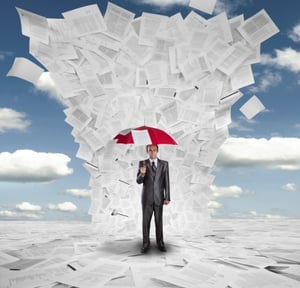Insuring property against natural catastrophes is a funny business because periodical losses are important to the market; this post from Sam Friedman explores why. In a nutshell, the insurance industry depends on catastrophic losses from time to time to normalize the supply and demand — and thus the pricing — of insurance capacity. The post is worth reading not just because it’s informative, but also because it explains the concept of “naïve capacity” (what a brilliant term for much of what happens in the capital markets these days!).
 These thoughts on industry capacity and high-level market building dominate insurance conversations, and Mr. Friedman is right to question the wisdom of the industry’s public embrace of genuinely disastrous events. But, there is another way for insurers to address the stability of the market, including the competition between genuine and “naïve” capacity. Accurate and resilient underwriting is an acid test for any insurer, naïve or otherwise, in any market.
These thoughts on industry capacity and high-level market building dominate insurance conversations, and Mr. Friedman is right to question the wisdom of the industry’s public embrace of genuinely disastrous events. But, there is another way for insurers to address the stability of the market, including the competition between genuine and “naïve” capacity. Accurate and resilient underwriting is an acid test for any insurer, naïve or otherwise, in any market.
The first step in underwriting natural catastrophe coverage is to firmly understand what the risk is at a given location. Going beyond simple flood maps or historical hurricane tracks, and embracing more data, more analytics, and more insight into a location’s real exposure allows insurers to underwrite in a way that is extremely competitive and tightly priced, where appropriate, and more loosely offered where they might want to shy away. The second step is to apply the insurer’s appetite for risk, which is related to capacity and strategy, through dynamic business/underwriting rules based on near-real-time accumulation and hyper-current trends. This second step is a much more sustainable way to address market conditions than waiting for a hurricane to wipe out a city or two.
Insurers who wish to differentiate themselves, from both their proper and “naïve” competition, should invest some of their capital (a microscopic portion of their current capacity) in software and analytics that will not only ensure they are competitive in ill-defined market conditions, but have a book of business that will perform extremely well when the next disaster does actually happen.

.png?width=500&name=InsitePro4%20(1).png)




Comment Form